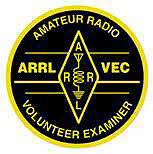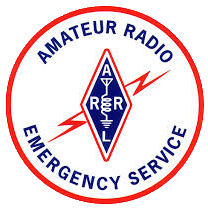Cross-Band repeating has great potential for use in EMCOMM, extending our ability to utilize handhelds as well as providing gateways to more distant repeaters.
Before we get too deep into cross-band repeating, lets review how a typical repeater works. A repeater, generally, receives a signal on one frequency and re-transmits what it receives on another nearby frequency. The difference between the receive and transmit frequency is what we call an "offset". On a 2-meter repeater that offset is usually less (negative) or more (positive) by 600 kilohertz. Repeaters also often have a "sub-audible" tone (often referred to as PL tone, a proprietary name used by Motorola). A sub-audible tone is a very low frequency tone that we can't hear, but the repeater can detect; If the sub-audible tone is not present then the repeater will usually just ignore the incoming signal, allowing the repeater to ignore a distant station that might be transmitting an unusual distance due to atmospheric conditions or filter out random noise on the frequency.
A radio operating cross-band will function much like a regular repeater; but unlike typical repeaters, which have the input and output frequencies on the same band, the input and output frequencies will be on entirely different bands, usually 2M and 70cm. The reason for this is the significant difference in frequencies allows the simultaneous transmit and receive with simple circuits built into the radio, rather than needing large and bulky duplexers required for same-band repeating.
Many in our group who can't directly reach the repeater with an HT utilize cross-band repeat capability. To cross-band, merely run an HT in simplex on an appropriate 440Mhz frequency and on your mobile or base station set one VFO to the same simplex frequency as your HT and operate the other VFO as normally for the repeater. Once the VFOs are set you'll need to put the radio in cross-band mode - how to do this varies by radio, so check your user's guide or search the internet. When the radio is in cross-band mode it will transmit everything that comes in on the repeater output to the 440Mhz frequency, and repeat everything from the 440Mhz frequency to the repeater. Your HT now has the same range as your base or mobile rig!
Cross-banding has great potential in EMCOMM, for the same reasons operators may use them at home. In areas where handhelds don't reach, a mobile rig in a vehicle can be set to cross-band at higher-power and extend the communications range of handhelds. Additionally, if we should be so far out of range that even a local mobile station can't make a repeater, additional stations along the way could be daisy-chained through multiple cross-band repeaters to reach the desired conventional repeater.
Many of you may have cross-band radios and not even know it, as it is often not well advertised in the marketing data. An easy way to find out would be to perform an internet search with your radio's model number and "cross-band". If it has the capability, you'll likely find instructions on how to enable and disable it.
While this is a great and useful capability, there are several things to consider:
1) A cross-banding radio will be transmitting whenever the handheld user or the repeater it's linked to is transmitting, meaning it will be working hard and could overheat, so use minimum power necessary and try to keep the radio well ventilated.
2) Because the radio transmits a lot, it pulls a lot of current. Be mindful if running in your vehicle, as it could draw the battery down if the vehicle isn't running.
3) A timeout timer should be utilized, so if the squelch on one side opens or interference exceeds the squelch setting, it won't stay locked in repeat mode, constantly transmitting.
4) Be mindful of the frequencies you use, as you don't want to interfere with normal repeater operation. There are frequencies set aside for auxiliary use, mostly in the 433-435mhz range.
5) A tone should be utilized wherever possible for your simplex frequency, just as a repeater uses tone! If the squelch is broken by a distant station or interference your radio could bring up the repeater and tie it up with nothing but noise; setting a tone will help minimize the possibility of this happening.
6) Set your squelch as high as possible. By keeping the squelch high you can decrease the possibility of an errant signal triggering your cross-band radio in error.
7) Finally, the legality of operating cross-band repeat with most radios is in question.
Legality Of Cross-Band Repeat
FCC sections 97.119a and 97.201 would seem to imply a cross-band station would need to self-identify, something most radios don't do. Remember, the cross-band repeater is a stand-alone station we communicate with via our handheld or other radio, so our identifying may not count as a station identification for the cross0band repeater. Another consideration is that when the radio is transmitting on your simplex frequency, it never identifies and is relaying your identification to the other band, not the simplex band. While YOU may be identifying on the simplex frequency, you may be doing so at lower power than the cross-band radio, not reaching as far as it is, leaving distant stations not hearing your identification.
That being said, the wording is a little vague, and the FCC has class certified these radios, with non-identifying cross-band capabilities. This would seem to imply use of the feature is not restricted.
In any case, this is a good reason to always operate at lowest possible power to achieve the desired report. If it turns out non-ident cross-banding is not legal, the sin is more easily forgiven if we haven't caused harmful interference.




